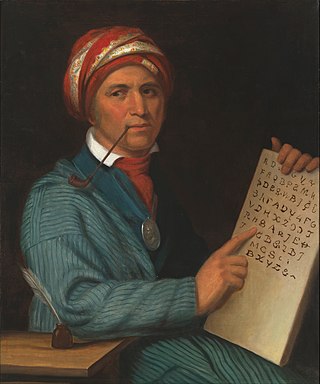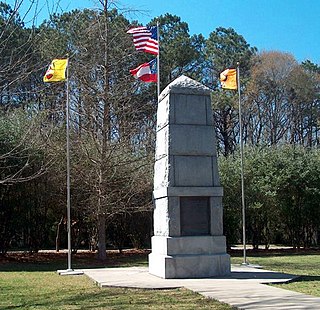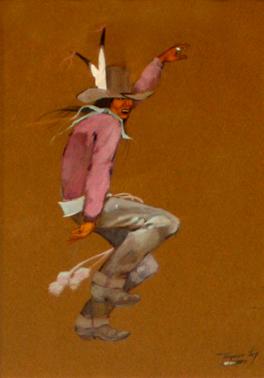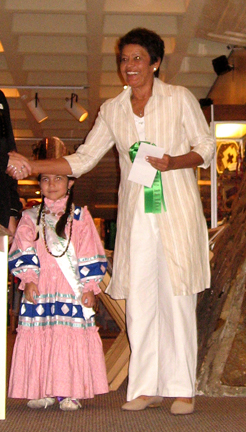Animation for language preservation
Erb created the first Cherokee animation in the Cherokee language, The Beginning They Told . The 11-minute animated piece relays parts of the Cherokee's creation story, featuring Buzzard, Beaver, and the Water Beetle, who brings fire to humanity. [3]
He combines traditional storytelling with 21st-century technology as a means of teaching the Cherokee language to young people. His work has frequently been screened by the National Museum of the American Indian. [1] "We're competing with mass culture," Erb says. "The kids have a choice; they can watch our animation or they can watch Elmo. You have to compete with all of that so the children will want to know their traditional stories and their language." [3]
Besides collaborating with students to produce animation in their tribal languages, Erb also produce educational material, such as animated shorts of animals singing numbers and colors in Cherokee. [3] The animated format provides a solution for the challenge of relaying what is traditional oral history to the next generation. [4]
Erb trained and mentors his colleagues, Roy Boney Jr. (Cherokee Nation), Matt Mason (Cherokee) and Nathan Young (Pawnee-Delaware-Kiowa), and together their work has established Tahlequah, Oklahoma as the "Indian Animation Capital". [5]
His work is shown at Native film festival throughout the United States and currently his work is supported in part by the Cherokee Nation. Mason, Boney, and Erb formed a production company called Cherokee Robot.
Erb's collaboration with students has led to some surprising new developments in the retelling of oral histories. Muscogee Creek middle school students and Erb created a video that combined animation, claymation and diorama sets to tell the story of Indian Removal. Their account has the Muscogee Creeks, freezing on the Trail of Tears, traveling through space to Paris, France, where beret-wearing Frenchmen teach the Creeks to stomp dance. Rabbit, the Muscogee Trickster, steals a coal of fire from the French and takes it back to the Creeks on their way to Indian Territory. [6]
In 2023, Erb debuted Rabbit Stories, an animated short film in the Cherokee language. [7] The film stars Wes Studi. [8]

The Indian removal was the United States government's policy of ethnic cleansing through the forced displacement of self-governing tribes of American Indians from their ancestral homelands in the eastern United States to lands west of the Mississippi River—specifically, to a designated Indian Territory, which many scholars have labeled a genocide. The Indian Removal Act of 1830, the key law which authorized the removal of Native tribes, was signed into law by United States president Andrew Jackson on May 28, 1830. Although Jackson took a hard line on Indian removal, the law was primarily enforced during the Martin Van Buren administration. After the enactment of the Act, approximately 60,000 members of the Cherokee, Muscogee (Creek), Seminole, Chickasaw, and Choctaw nations were forcibly removed from their ancestral homelands, with thousands dying during the Trail of Tears.

The Cherokee people are one of the Indigenous peoples of the Southeastern Woodlands of the United States. Prior to the 18th century, they were concentrated in their homelands, in towns along river valleys of what is now southwestern North Carolina, southeastern Tennessee, southwestern Virginia, edges of western South Carolina, northern Georgia and northeastern Alabama consisting of around 40,000 square miles.

The Muscogee, also known as the Mvskoke, Muscogee Creek or just Creek, and the Muscogee Creek Confederacy, are a group of related Indigenous peoples of the Southeastern Woodlands in the United States. Their historical homelands are in what now comprises southern Tennessee, much of Alabama, western Georgia and parts of northern Florida.

The Trail of Tears was the forced displacement of approximately 60,000 people of the "Five Civilized Tribes" between 1830 and 1850, and the additional thousands of Native Americans within that were ethnically cleansed by the United States government.

The term Five Civilized Tribes was applied by the United States government in the early federal period of the history of the United States to the five major Native American nations in the Southeast: the Cherokee, Chickasaw, Choctaw, Muscogee (Creek), and Seminoles. White Americans classified them as "civilized" because they had adopted attributes of the Anglo-American culture.

The Yuchi people are a Native American tribe based in Oklahoma. Their original homeland was in the southeast of the present United States.

The stomp dance is performed by various Eastern Woodland tribes and Native American communities in the United States, including the Muscogee, Yuchi, Cherokee, Chickasaw, Choctaw, Delaware, Miami, Caddo, Tuscarora, Ottawa, Quapaw, Peoria, Shawnee, Seminole, Natchez, and Seneca-Cayuga tribes. Stomp dance communities are active in Georgia, North Carolina, Oklahoma, Alabama, Mississippi, and Florida.

The Muscogee Nation, or Muscogee (Creek) Nation, is a federally recognized Native American tribe based in the U.S. state of Oklahoma. The nation descends from the historic Muscogee Confederacy, a large group of indigenous peoples of the Southeastern Woodlands. Official languages include Muscogee, Yuchi, Natchez, Alabama, and Koasati, with Muscogee retaining the largest number of speakers. They commonly refer to themselves as Este Mvskokvlke. Historically, they were often referred to by European Americans as one of the Five Civilized Tribes of the American Southeast.
Fred Beaver was a prominent Muscogee Creek-Seminole painter and muralist from Oklahoma.

Roy Boney Jr. is a Cherokee comic artist, fine artist, computer animator and language preservationist from Locust Grove, Oklahoma, a citizen of the Cherokee Nation, and a hereditary member of the Deer Clan.
The Bacone school or Bacone style of painting, drawing, and printmaking is a Native American intertribal "Flatstyle" art movement, primarily from the mid-20th century in Eastern Oklahoma and named for Bacone College. This art movement bridges historical, tribally-specific pictorial painting and carving practices towards an intertribal Modernist style of easel painting. This style is also influenced by the art programs of Chilocco Indian School, north of Ponca City, Oklahoma, and Haskell Indian Industrial Training Institute, in Lawrence, Kansas and features a mix of Southeastern, Prairie, and Central Plains tribes.

Jerome Richard Tiger was a Muscogee Nation-Seminole painter from Oklahoma. Tiger produced hundreds of paintings from 1962 until his death in 1967.

Virginia Alice Stroud is a Cherokee-Muscogee Creek painter from Oklahoma. She is an enrolled member of the United Keetoowah Band of Cherokee Indians.
The Four Mothers Society or Four Mothers Nation is a religious, political, and traditionalist organization of Muscogee Creek, Cherokee, Choctaw and Chickasaw people, as well as the Natchez people enrolled in these tribes, in Oklahoma. It was formed in the 1890s as an opposition movement to the allotment policies of the Dawes Commission and various US Congressional acts of the period. The society is religious in nature. It opposed allotment because dividing tribal communal lands attacked the basis of their culture. In addition, some communal lands would be declared surplus and likely sold to non-Natives, causing the loss of their lands.
Sharp v. Murphy, 591 U.S. ___ (2020), was a Supreme Court of the United States case of whether Congress disestablished the Muscogee (Creek) Nation reservation. After holding the case from the 2018 term, the case was decided on July 9, 2020, in a per curiam decision following McGirt v. Oklahoma that, for the purposes of the Major Crimes Act, the reservations were never disestablished and remain Native American country.

Solomon McCombs was a Native American artist from Oklahoma known for his paintings, murals, and illustrations.












